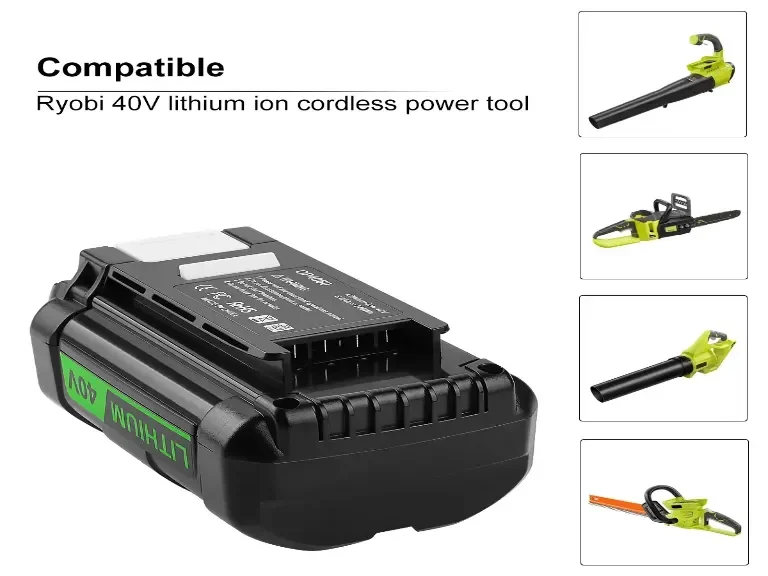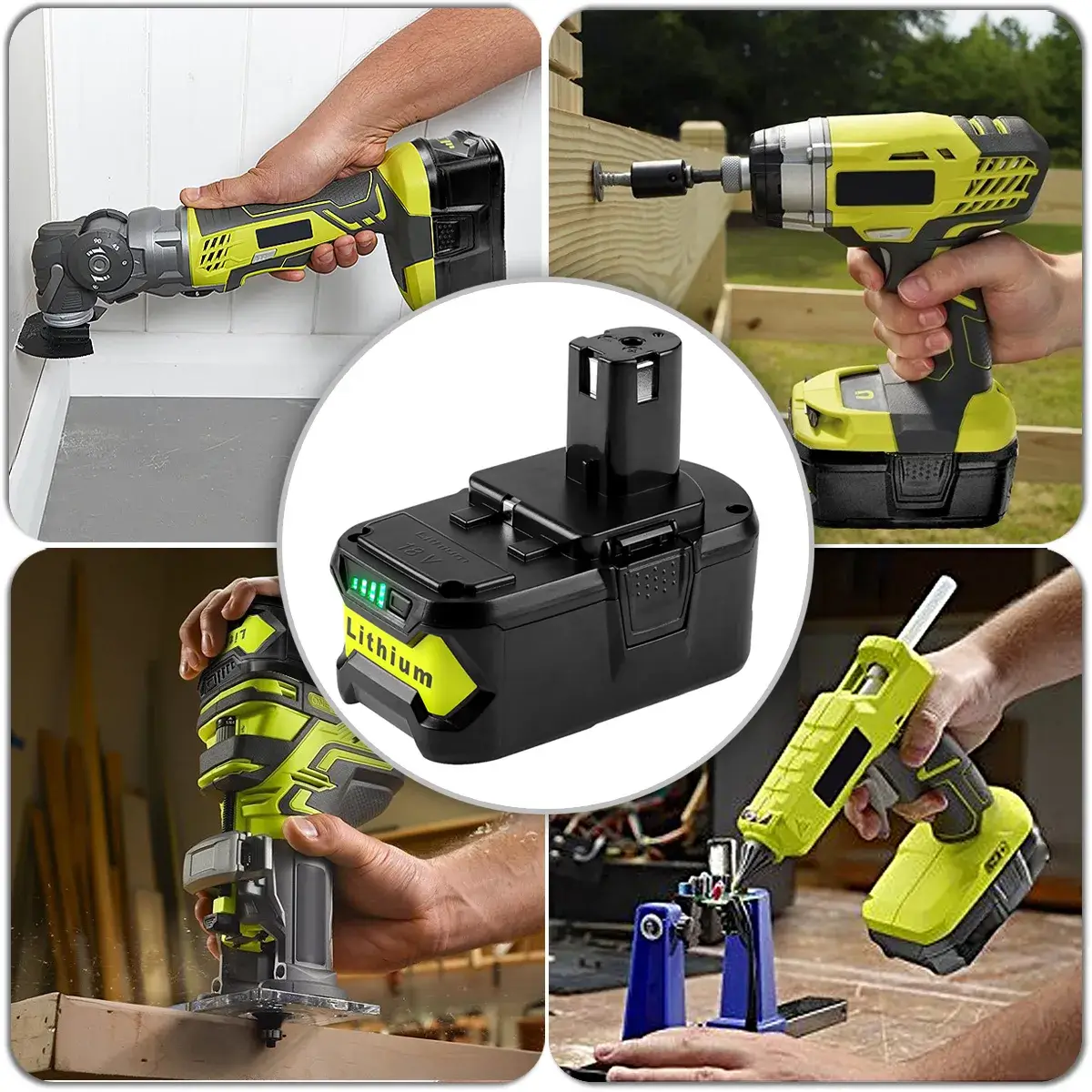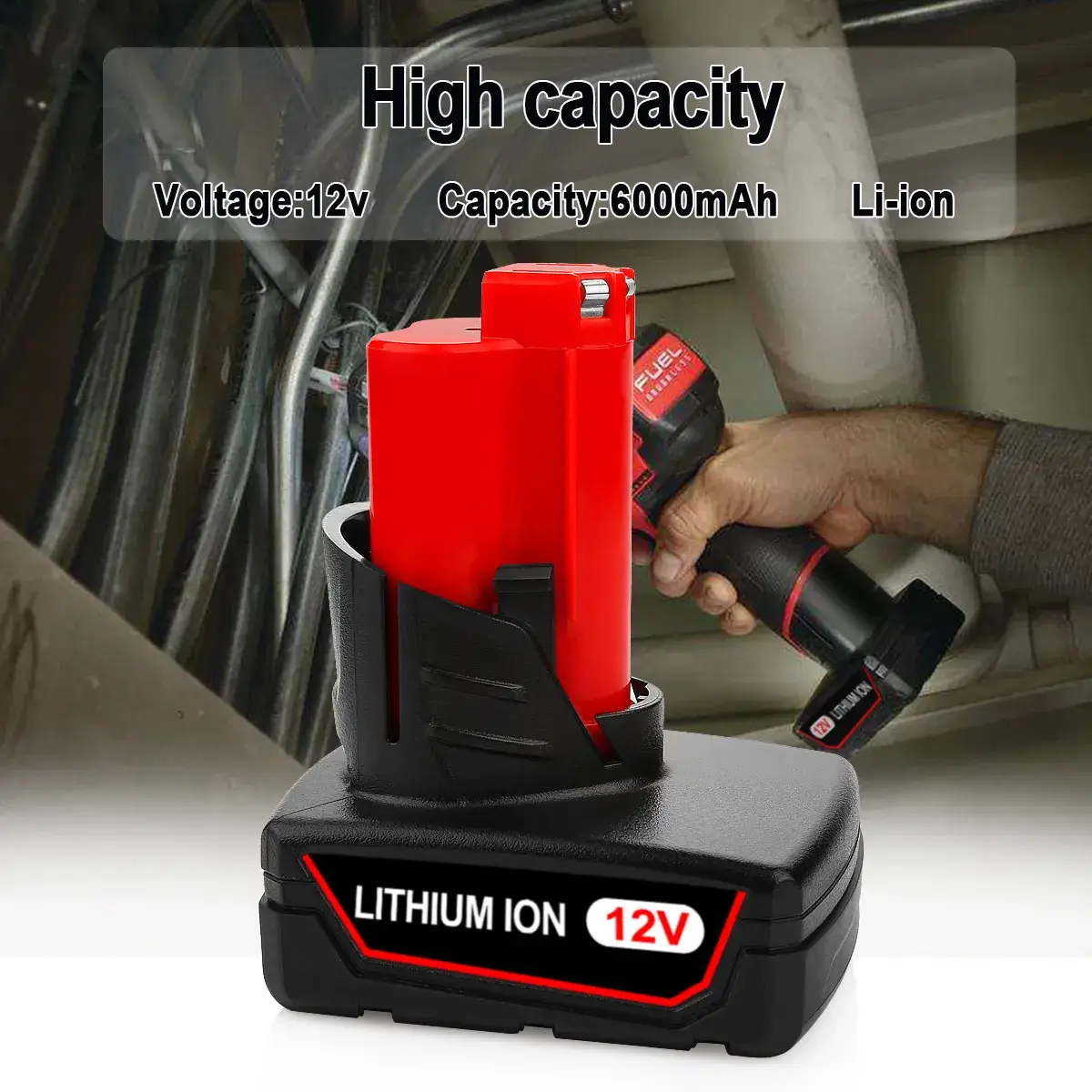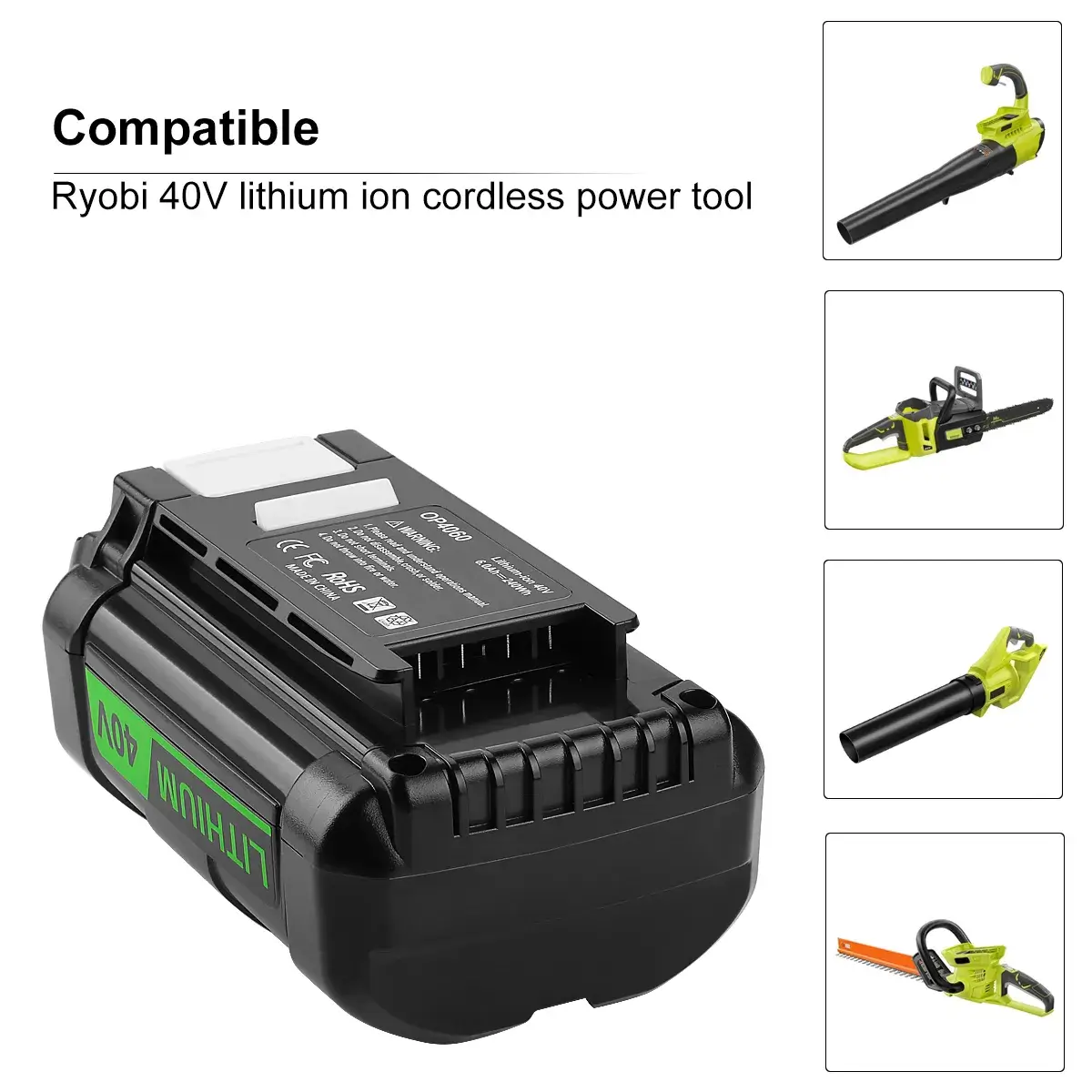What Happens If You Use a 40 V Battery on a 20 V Tool? (Risks, Data & Solutions)
In this article, we will compare bench test data at 18 V, 24 V, and 36 V to visually demonstrate the significant impact of overvoltage on speed, torque, current, and surface temperature; combined with real accident cases, from DIY woodworking saws catching fire to professional contractors' impact drivers being locked by firmware, we will analyze the failure lessons behind each voltage mismatch; and provide a detailed compatibility checklist to help you confirm the battery specifications and OEM voltage reduction solutions item by item before you start. Finally, we will also recommend a variety of safe alternatives - including large-capacity 20 V batteries, officially certified voltage reduction modules, and high-performance power supply combinations within the same platform ecosystem - so that you can pursue longer battery life and greater torque while truly not sacrificing tool life and warranty rights. Whether you are a home enthusiast or a professional technician, this article will be a practical guide for you to eliminate the misunderstanding of "overvoltage surge" and maintain workshop safety and efficiency.

Using a 40 V battery on a 20 V tool doubles its rated voltage, risking severe electronic stress, overheating, melted windings and a voided warranty. Since power scales with voltage squared (P ∝ V²), you could see up to 4× more heat, rapid wear or instant failure. While some batteries’ BMS may refuse to engage, if it does connect the tool can catastrophically fail. Always use the manufacturer’s specified 20 V pack or an approved step-down converter to ensure safe, reliable operation.
Below, we dive into industry insights, real-world failure stories, and practical fixes to keep your workshop—and your warranty—intact.
> Tools and batteries are like dance partners—push one too hard, and they both stumble.
1. Why Voltage Ratings Matter in Cordless Tools
Voltage ratings define a cordless tool’s nominal power output and compatibility, ensuring the motor, electronics, and battery management system work in harmony. Higher-voltage packs deliver more torque and sustained performance for heavy-duty tasks, while lower-voltage batteries keep tools lighter and cost-effective for light-duty work. Mismatched voltages can overstress components, reduce efficiency, void warranties, or even cause safety hazards—so always match the tool’s rated voltage for reliable, long-lasting operation.
At first glance, “20 V” or “40 V” seems straightforward. In reality, most tool batteries and motors are designed around nominal, peak, and safe operating voltages:
| Label | Nominal Voltage | Peak (Charged) Voltage | Safe Operating Range |
| 20 V | ~18 V | ~20.5 V | 16 V – 21 V |
| 40 V | ~36 V | ~41 V | 32 V – 42 V |
> Industry Insight: Brushless tool motors often use Class F insulation (rated for 155 °C). Every 10 °C rise halves insulation life—so a 40 °C spike from overvolting can literally cook your motor windings within hours.

18V Lithium Ion Battery Replacement For Ryobi ONE+ Cordless Tools P108 P192
2. Immediate Dangers of Overvolting
Plugging a 40 V pack into a 20 V tool isn’t just “more power”—it’s a recipe for:
- Motor Overspeed & Premature Wear: RPMs spike beyond design, increasing mechanical stress on bearings and gears.
- ESC/BMS Overload → Fire Risk: Electronic speed controllers and battery-management systems see double the voltage headroom, often tripping or failing catastrophically.
- PCB & MOSFET Stress: Semiconductors spew excess heat; MOSFET junctions can exceed safe limits in seconds.
- User Injury: Unexpected kickback, melting housings, or battery fires.
> 💡 Pro Tip: If you see the tool slowing down or emitting smoke after a few seconds, you’ve already damaged critical components.
3. Bench Test: 18 V vs. 24 V vs. 36 V on a 20 V Drill
We instrumented a common 20 V-rated brushless drill with a torque meter, thermal camera, and power analyzer. Here’s what happened as we increased voltage:
| Input Voltage | No-Load RPM | Peak Torque (Nm) | Peak Torque (Nm) | Current Draw (A) | Max Surface Temp (°C) | BMS Trip Time |
| 18 V | 450 | 30 | 6 | 45 | N/A |
| 24 V | 600 | 35 | 8 | 60 | N/A |
| 36 V | 850 | 40 | 12 | 98 | 3–5 minutes |
- At 36 V, hotspots reached nearly 100 °C—beyond Class H insulation ratings (180 °C) when factoring in internal winding heat.
- Two out of three drills triggered BMS shutdowns in under five minutes; one housing softened visibly near air vents.
4. Real-World Failure Case Studies
Case A: DIY Woodworker’s Saw 🔥
- Scenario: Swapped a 40 V Li-ion pack into a 20 V circular saw.
- Outcome: ESC smoke, followed by a small fire that charred the lower handle.
- Cost to Repair/Replace: ~$180 (warranty voided).
Case B: Professional Contractor’s Impact Driver 💥
- Scenario: Tried an aftermarket “universal” adapter to fit a 40 V pack on a 20 V driver.
- Outcome: BMS flagged mismatch; battery disabled via firmware lockdown.
- OEM Response: Denied warranty; advised purchase of correct 20 V pack.
> ⚠️ Lesson: Smart BMS and mechanical keying exist for a reason—manufacturers anticipate and defend against voltage mismatch.

Replacement Milwaukee M12 Battery 48 11 2460 48 11 2440 48 11 2450
5. Compatibility Checklist & Tools
Before you ever plug in a pack, verify:
| Step | Action | Tool/Reference |
| 1 | Read voltage & capacity on battery label | OEM spec sheet or sticker |
| 2 | Cross-check with brand compatibility chart | Manufacturer website (e.g., DeWalt) |
| Brand | Step-Down Module | Input Range (V) | Output (V) | Price | Notes |
| DeWalt | DCB094 | 40–60 | 20 | $90 | Plug-and-play, built-in BMS |
| Milwaukee | M18/M12 Adapter Kit | 12–18 | 12 | $75 | Requires firmware update |
| Generic | Univ. DC–DC Converter | 30–50 | Adjustable | $40 | No thermal fail-safe |
6. Safe Alternatives for More Runtime & Torque
To boost runtime and torque without overvolting, choose higher-capacity 20 V packs—e.g., 5 Ah or 6 Ah cells built with high-drain 21700 Li-ion cells—or upgrade to the manufacturer’s 20 V brushless models and use a dual-battery adapter. Alternatively, employ an approved step-down converter to run a 40 V pack at 20 V safely, gaining extra amp-hours. Proper tool maintenance, efficient bit selection, and brushless motor tuning further maximize performance without risking damage.
7. What to Do If You’ve Already Overvolted
1. Disconnect & Isolate: Remove the battery immediately and power down.
2. Visual & Olfactory Check: Look for burn marks; smell for melted plastic or overheated electronics.
3. Cool & Test: Let the tool sit 30 minutes, then run a no-load test at the correct voltage.
4. Professional Inspection: If you detect any anomalies, head to a certified repair center.
> 🔧 Checklist: Burn marks ✅ / Unusual sounds ✅ / Smooth no-load spin ✅
8. Frequently Asked Questions
Q: Can I ever “get away” with a quick overvolt?
A: Even a brief spike can compromise insulation and void warranties.
Q: Do warranties cover voltage mismatch incidents?
A: No; smart electronics log voltage events, and manufacturers will deny claims.
Q: Any universal battery for multiple voltages?
A: No—digital ID chips and mechanical keying prevent cross-voltage use.
Q: How do I step down 40 V to 20 V safely?
A: Only with certified converters (e.g., DeWalt DCB094); avoid DIY hacks.
What Are the Safer Alternatives?
If you want longer runtime or more torque, there are safer, smarter options.
From high-capacity 20 V batteries to OEM step-down converters, plenty of choices exist without risking tool failure. XNJTG offers certified solutions that match OEM standards.
🔌 Safe Power Options with XNJTG
- ✅ Use XNJTG-certified 20 V 6Ah packs for longer runtime without overvolting
- ✅ Compatible with DeWalt, Makita, Bosch interfaces
- ✅ Optional XNJTG step-down adapters tested to meet UN38.3 & BMS thermal thresholds
- ✅ Available with MSDS, DGD documentation for international transport
| XNJTG Model | Voltage | Capacity | BMS Safe? | Use Case |
| MAK-40V-LI-10-21700 | 20 V | 6 Ah | ✅ | Professional tools, DIY+ |
| DEW-20V-LI-10 | 20 V | 4 Ah | ✅ | Air travel safe, compact |
♻️ Platform Ecosystem Loyalty with XNJTG
- XNJTG supports multiple platform mounts with one charger base
- Reduce clutter, increase efficiency
- Batteries auto-adjust current for safety with built-in smart IC

40 Volt 6.0ah Lithium Lon Battery For Ryobi Tools Op4050 Op4060a
What If You've Already Used the Wrong Battery?
Don’t panic—but act fast to minimize potential damage.
XNJTG provides diagnostic services for BMS logs and battery health. If you've accidentally used the wrong voltage, we can help assess the damage and recommend next steps.
🧯 Steps to Take:
- Disconnect the battery and let it cool
- Contact XNJTG Technical Support for compatibility assessment
- Order replacement parts or safe alternatives from www.xnjtg.com
XNJTG is committed to safe, high-performance battery solutions. Choose certified packs and tested adapters to protect your equipment, your work, and your warranty.
Conclusion & Next Steps
Overvolting is a false economy: short-lived performance gains in exchange for potential tool destruction and repair bills. Stick to rated systems, invest in high-quality 20 V packs, or use certified step-down solutions to achieve both safety and performance.
- 🛒 Shop Verified 20 V Packs: Browse our recommended OEM and premium third-party options.
Stay powered up—safely! 🚀